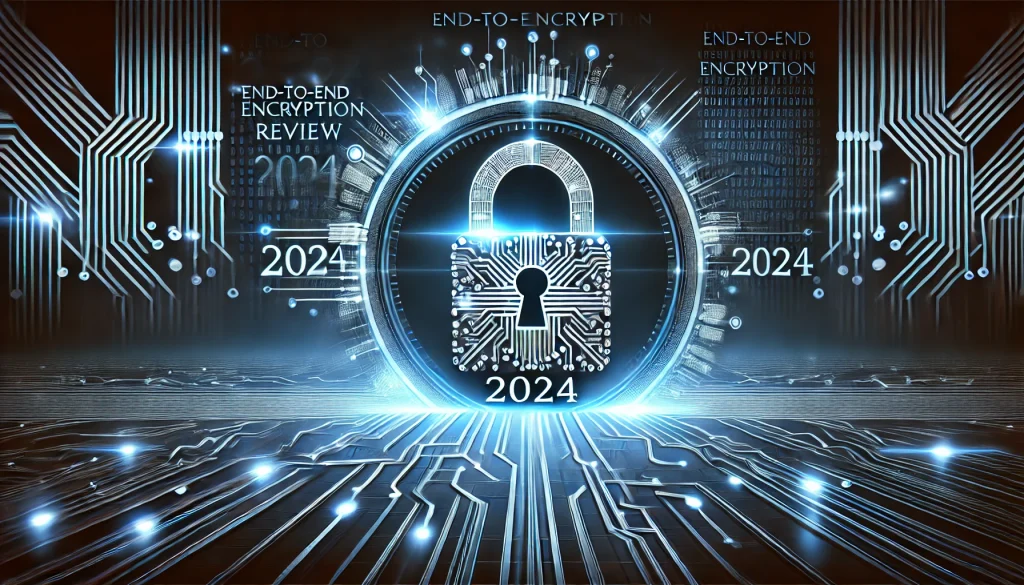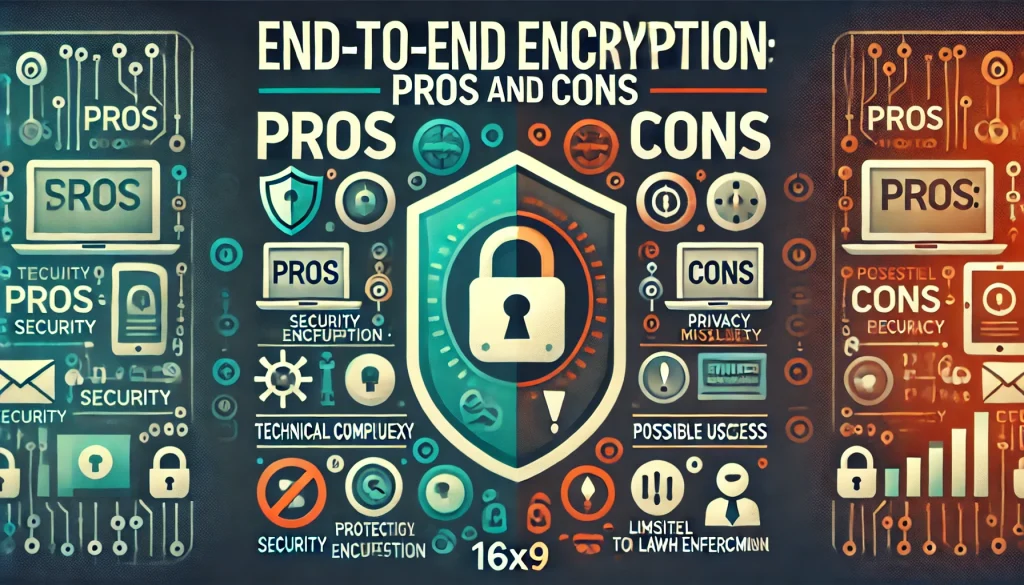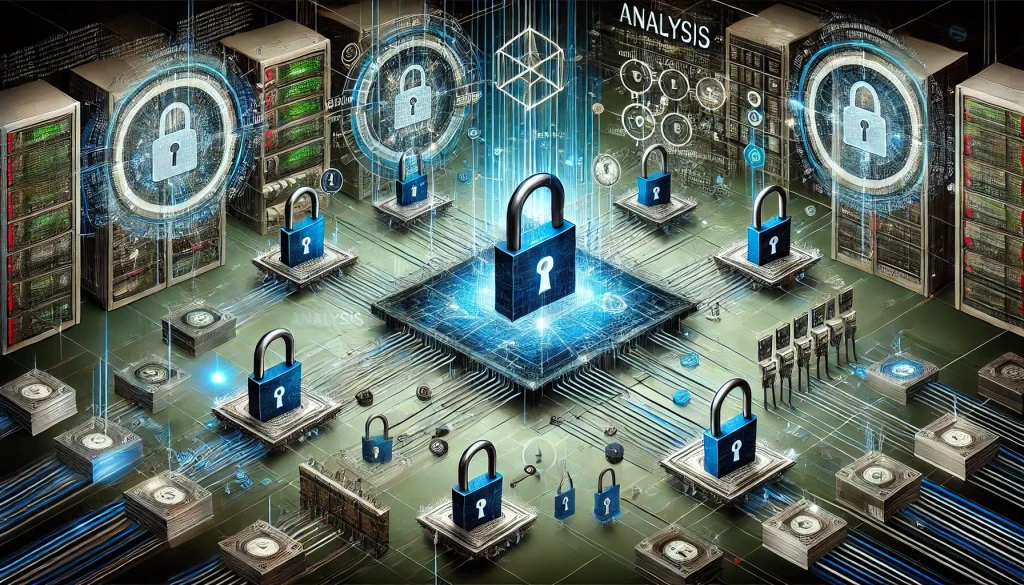Introduction

In the rapidly evolving world of digital communications, ensuring data privacy and security is more important than ever, and that’s the focus of this review: End-to-end encryption (E2EE). By 2024, E2EE will continue to be the cornerstone of secure communications, protecting sensitive data from unauthorized access. This review will explore the key features, benefits, and drawbacks of E2EE and help you understand why it’s so important to protect your information in today’s digital age.
Overview
End-to-end encryption (E2EE) is a method of data transmission that ensures that only the people communicating can read the message. Data sent from one end is encrypted and can only be decrypted by the intended recipient, preventing access by third parties, including service providers. By 2024, E2EE will be an integral feature of many messaging apps, email services, and data storage solutions. Key features include unbreakable encryption algorithms, user-friendly interfaces, and widespread adoption across a variety of platforms. However, this approach is not without its challenges, especially when it comes to balancing privacy and law enforcement needs.
Pros and cons

Pros
- Enhanced privacy: E2EE ensures that only the intended recipients can access data, keeping it safe from hackers, government surveillance, and even the service provider itself.
- Security across platforms: Whether you use messaging apps, email services, or cloud storage, E2EE provides consistent security across platforms.
- User trust: With growing concerns about data breaches, E2EE helps build user trust by ensuring the security of user information.
Cons
- Complex implementation: Setting up E2EE at a service provider can be technically challenging, often requiring significant resources and expertise.
- Regulatory concerns: Governments and law enforcement agencies argue that E2EE can hinder criminal investigations by making it difficult to access sensitive data.
- Potential for misuse: While E2EE protects privacy, it can raise ethical concerns because it can be abused by bad actors to cover up illegal activities.
Deep dive analytics

Design
End-to-end encryption is designed with a focus on privacy and security. The encryption process is seamless and generally invisible to the user, providing a simple experience. However, the design complexity behind it is significant, requiring strong algorithms and keys that are difficult to crack.
Features
E2EE works by encrypting data on the sender’s device and decrypting it only on the recipient’s device, meaning that even if the data is intercepted in transit, it cannot be read without a decryption key. This feature is critical in environments where sensitive data, such as personal communications or financial information, is being transmitted.
Performance
While E2EE is generally efficient, it can introduce latency, especially in real-time communication services. Performance depends primarily on the cryptographic algorithms used and the processing power of the devices involved.
Security
Security is a major strength of E2EE. It offers a high level of protection against data leakage and unauthorized access. Even if data is intercepted, it is nearly impossible to decrypt without the proper keys, making it a strong choice for protecting sensitive information.
End-to-end encryption aspects
| Lateral | Details | Impact |
|---|---|---|
| Privacy | Data is only accessible to the sender and recipient, ensuring confidentiality. | High |
| Security protocols | Protect your data in transit with advanced encryption algorithms. | Very high |
| Implementation complexity | Proper integration requires significant resources and expertise. | Normal |
| Legal and regulatory compliance | Restrictions on data access by law enforcement can cause problems. | Variables |
| User experience | For end users, it’s usually smooth, but you may experience some lag. | Normal |
Compare
End-to-end encryption boasts superior privacy features when compared to other encryption methods, such as Transport Layer Security (TLS) or symmetric encryption. Unlike TLS, which only encrypts data in transit, E2EE ensures that data remains encrypted during the entire communication process, even on the server. Symmetric encryption is faster, but because it uses the same key for both encryption and decryption, it doesn’t have the same level of security and can be more easily compromised.
Conclusion
End-to-end encryption is an essential tool for protecting data in an increasingly digitalized world. While it comes with challenges, especially in terms of implementation and regulation, the benefits of increased privacy and security far outweigh the drawbacks. For anyone concerned about the safety of their personal or business data, we highly recommend adopting E2EE. As data breaches become more common in 2024, E2EE will remain a key component of a robust cybersecurity strategy.
Evaluation
4.5/5 – End-to-end encryption provides excellent security, but is difficult to implement and faces potential regulatory issues.
FAQ
What is end-to-end encryption?
End-to-end encryption is a method of data encryption in which only the sender and receiver can read the data.
Why is end-to-end encryption important?
Because it keeps your data private and secure, protecting it from unauthorized access.
Are there any downsides to using end-to-end encryption?
Yes, it provides strong security, but it can be difficult to implement and may raise regulatory concerns.
See also
- Digital Watch. (n.d.). Encryption. Geneva Internet Platform. Retrieved from https://dig.watch/topics/encryption
- Xie, H., Zhang, X., Wang, Q., & Jiang, L. (2024). Research on secure communication using end-to-end encryption for IoT systems. Sensors, 24(2), 438. https://www.mdpi.com/1424-8220/24/2/438
- CIO Insight. (n.d.). End-to-end encryption: How it works and why it matters. https://www.cioinsight.com/security/end-to-end-encryption/
- Facebook Newsroom. (2024, March). End-to-end encryption on Messenger explained. Meta. https://about.fb.com/news/2024/03/end-to-end-encryption-on-messenger-explained/
- Digit. (2024, February 22). Data protection: The pros and cons of end-to-end encryption. Retrieved from https://www.digit.fyi/data-protection-the-pros-and-cons-of-end-to-end-encryption/
